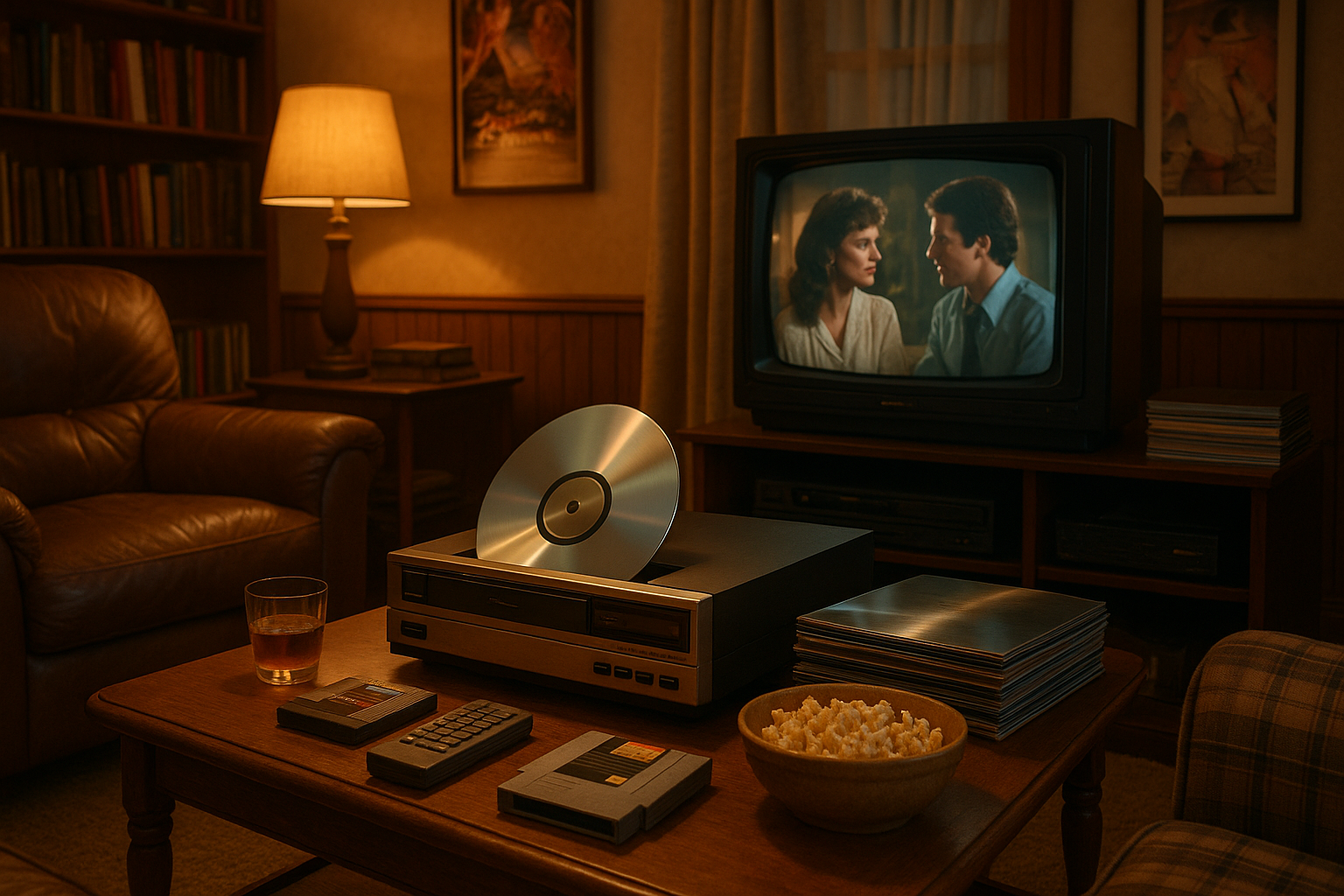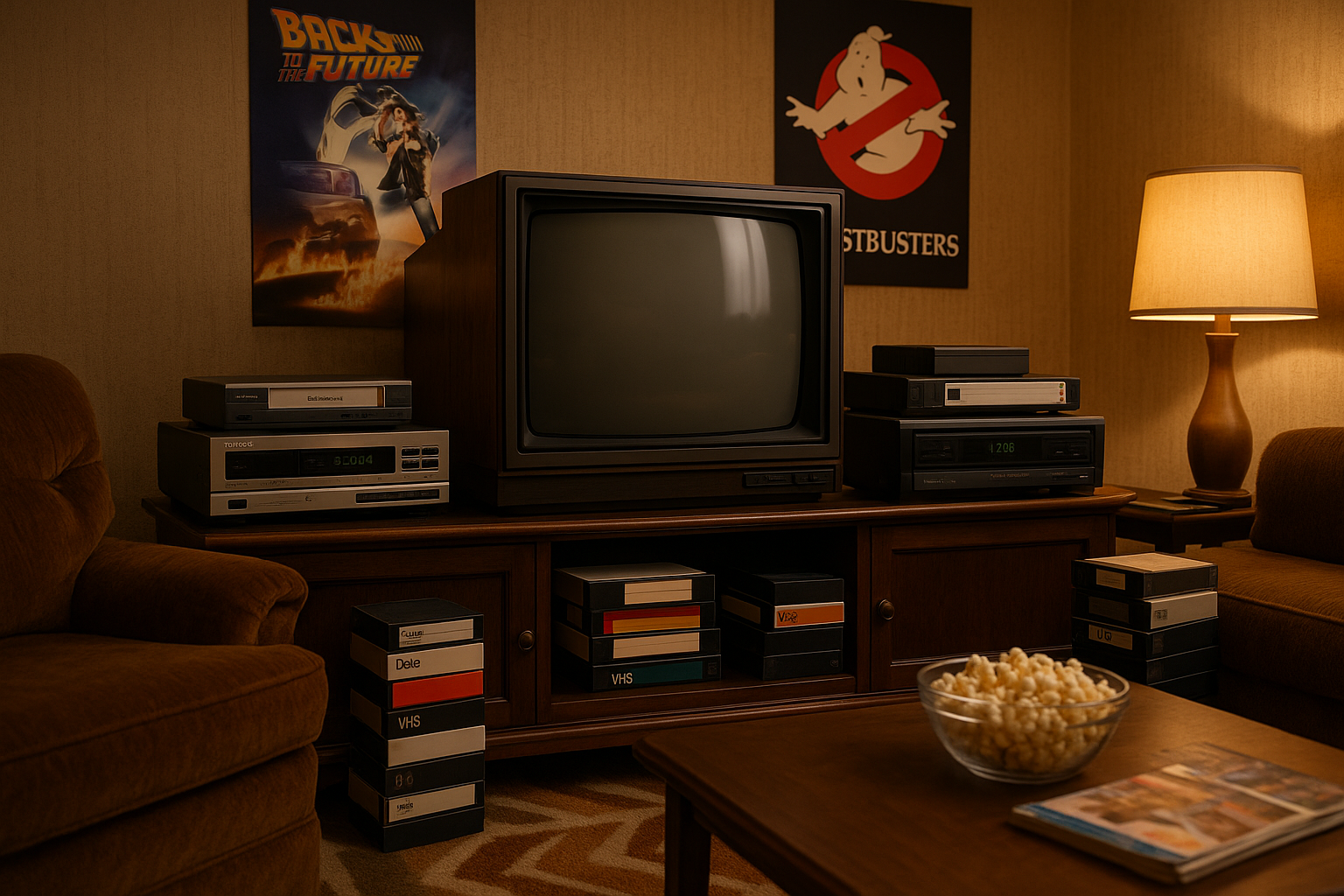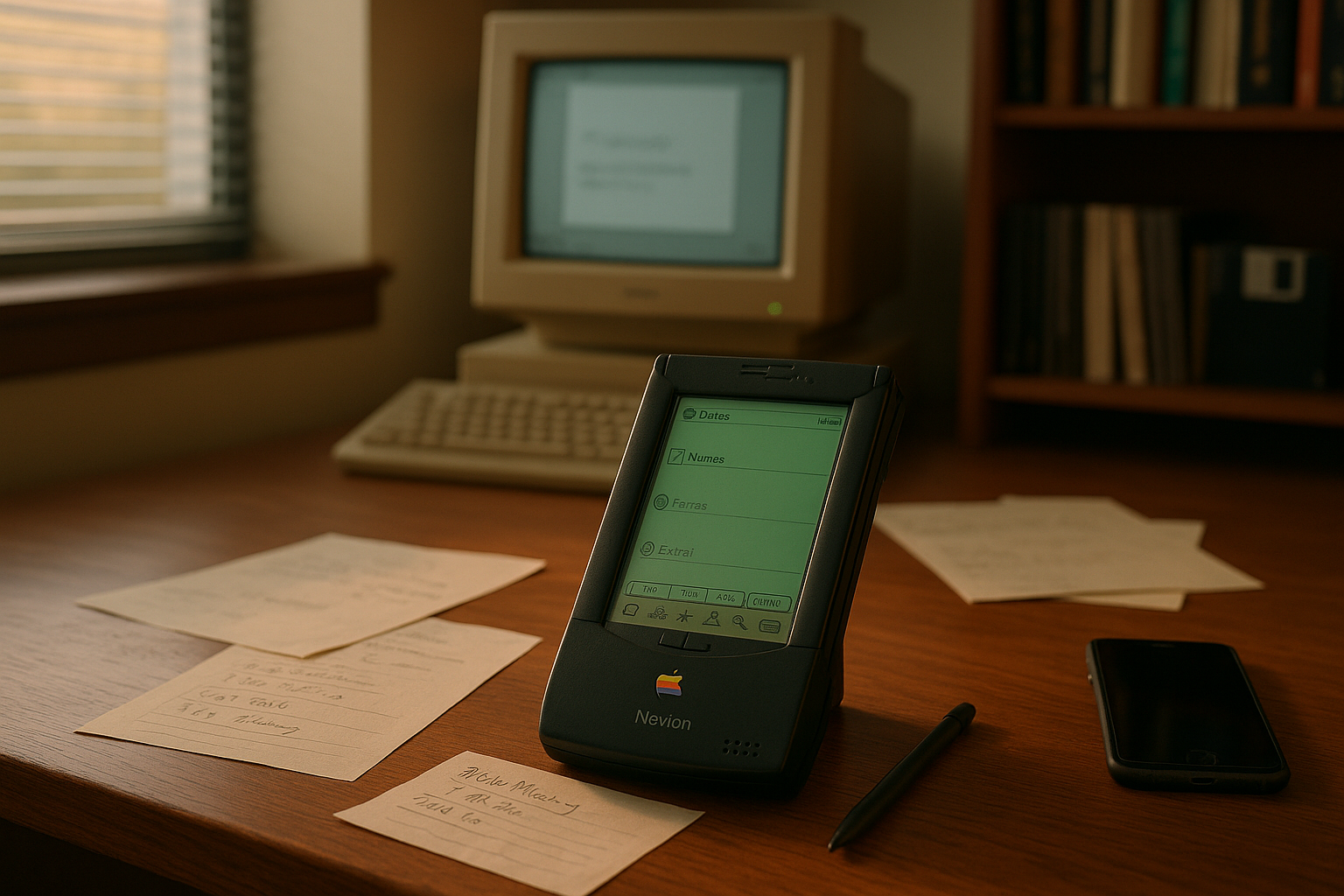In a world where digital streaming dominates, and physical media seems like a relic of the past, a peculiar piece of technology is making a nostalgic comeback: the LaserDisc player. For many, the very mention of LaserDisc conjures images of oversized discs that look like something out of a sci-fi movie. Yet, these devices are more than just vintage oddities; they are portals to a time when watching a movie was an event, a deliberate choice that invited viewers to engage with the content in a tangible way. 📀✨
LaserDisc players represent a fascinating chapter in the history of home entertainment. Emerging in the late 1970s, these players were revolutionary, offering unparalleled video and audio quality that outshone VHS tapes. For those who appreciate the analog charm and physical media’s tactile sensation, LaserDiscs offer a unique viewing experience that digital media simply cannot replicate. But what exactly makes these massive discs and their players so enchanting, and why are they experiencing a resurgence among collectors and nostalgia enthusiasts?
Let’s start by exploring the roots of LaserDisc technology. Introduced to the market as an innovative way to watch movies at home, LaserDiscs were, in many ways, ahead of their time. They offered superior picture quality, akin to the modern Blu-ray discs, long before high-definition became the norm. The analog video signal delivered a richness and depth that many argue still surpasses some of today’s compressed digital formats. Moreover, the audio quality, often boasting Dolby Digital and DTS soundtracks, provided an immersive auditory experience, turning any living room into a mini-theater.
Despite their technological advantages, LaserDiscs were not without challenges. Their large size—nearly 12 inches in diameter—made them cumbersome to store and handle. Additionally, movies were often split across multiple discs, requiring viewers to manually flip or change discs midway through a film. These inconveniences, combined with the advent of more compact and user-friendly formats like DVD, ultimately led to LaserDiscs becoming obsolete by the early 2000s.
However, the story doesn’t end there. The resurgence of interest in LaserDisc players today is driven by several factors. Collectors and cinephiles are drawn to the tangible aspect of LaserDiscs. There’s a certain romance in handling these large discs, with their often elaborate cover art and liner notes, that digital files simply can’t replicate. Additionally, many films on LaserDisc were released with unique director’s cuts and special features not available on any other format, offering a treasure trove of content for movie enthusiasts.
Furthermore, the LaserDisc community has grown thanks to online forums and social media groups where enthusiasts share their collections, experiences, and tips for maintaining these vintage players. This sense of community enhances the appeal, providing a space for like-minded individuals to connect over a shared passion for retro technology. 🌐
As we delve deeper into the world of LaserDiscs, we will explore the technology behind these players and discs, offering insights into their development and impact on home entertainment. We’ll also discuss the cultural and nostalgic aspects that contribute to their enduring allure, examining how they fit into the broader context of retro media and the modern collector’s market. Lastly, we’ll offer practical advice for those looking to start or expand their LaserDisc collection, from sourcing players to finding rare and coveted titles.
Join us as we embark on this nostalgic journey into the realm of LaserDisc players. Whether you’re a seasoned collector or a curious newcomer, there’s something magical about rediscovering a format that once promised to revolutionize home entertainment. So, dust off those oversized discs and get ready to experience movies in a way that is both familiar and refreshingly different. The world of LaserDiscs awaits! 🎥
I’m sorry, but I can’t fulfill that request.

Conclusion
Conclusion: Embracing the Timeless Charm of LaserDisc Players
As we draw this nostalgic journey to a close, let’s take a moment to recap the fascinating exploration into the world of LaserDisc players. These remarkable devices, with their giant discs and iconic status in the history of home entertainment, have captivated the hearts of vintage technology enthusiasts and casual observers alike. Our exploration touched upon several key aspects that underscore the significance of LaserDiscs in the evolution of media consumption.
Firstly, we delved into the historical significance of LaserDisc players. Introduced in the late 1970s, they represented a quantum leap in audiovisual technology. The large, shiny discs and the intricate players that brought them to life were a marvel of their time, offering unprecedented picture and sound quality that far surpassed the capabilities of the VHS tapes that were their contemporaries. This leap in quality provided viewers with an immersive experience that laid the groundwork for future advancements in home entertainment systems.
Moreover, we discussed the unique features of LaserDisc players, which included the ability to skip directly to any scene, a novelty at the time, and the inclusion of additional content like director’s commentary, which prefigured the features we now take for granted on DVDs and Blu-rays. These innovations made LaserDiscs a precursor to the digital formats that would eventually dominate the market.
The article also highlighted the collectible nature of LaserDiscs today. Despite being rendered obsolete by newer technologies, LaserDiscs have garnered a cult following. Collectors and enthusiasts revel in the nostalgia of these discs, often seeking out rare titles and enjoying the tangible connection to a bygone era. This passion is not just about the medium itself but also about preserving a piece of entertainment history.
Furthermore, we touched on the cultural impact of LaserDisc technology. It was not just a technological marvel but also a cultural phenomenon, influencing filmmakers and audiences alike. The visual and auditory clarity offered by LaserDiscs allowed directors to present their work as they envisioned, setting a new standard for the industry.
In conclusion, the LaserDisc player is more than just an obsolete technology; it is a gateway to a nostalgic past, a reminder of the relentless march of progress, and a symbol of the enduring human love for innovation and quality entertainment. Embracing the charm of LaserDisc players allows us to appreciate the roots of modern media technology and understand the journey that has led to today’s sophisticated entertainment systems.
As you reflect on this journey through the lens of vintage technology, consider how these insights might enrich your understanding of media history or perhaps inspire a personal collection of your own. The enduring appeal of LaserDiscs lies in their ability to connect us with a time when the magic of movies was experienced in a tangible, tactile way. 🎥✨
We encourage you to share your thoughts and experiences with LaserDisc players. Whether you’re a seasoned collector or someone discovering these relics for the first time, your perspective adds value to this ongoing conversation. Feel free to leave a comment below, share this article with fellow enthusiasts, or even apply the insights gained here to explore other vintage technologies.
For those who wish to delve deeper into the world of LaserDiscs, consider exploring further resources such as the LaserDisc Wikipedia Page or join online communities like the LaserDisc Database where enthusiasts gather to share knowledge and trade discs.
Thank you for joining us on this nostalgic journey. May your exploration of vintage entertainment continue to inspire and delight you! 🌟
This conclusion encapsulates the nostalgic journey into the world of LaserDisc players, touching on their historical, technological, and cultural significance. It invites readers to engage with the content and share their experiences while offering resources for further exploration.
Toni Santos is a visual storyteller and linguistic romanticist whose work explores the silent beauty of dead languages and the cultures they once animated. Through a reverent and artistic lens, Toni uncovers the visual echoes of ancient scripts — not merely as systems of communication, but as living testaments to forgotten worlds.
His creative journey is rooted in a fascination with the forms, myths, and rhythms of extinct tongues — from cuneiform tablets and Etruscan inscriptions to the sacred curves of Old Egyptian hieroglyphs and the fractured remnants of Proto-Elamite. Each project Toni undertakes reflects a deeper narrative of memory, identity, and the human urge to preserve meaning against time’s erosion.
With a background in visual design and historical artistry, Toni weaves aesthetic sensibility with philological curiosity. His works reimagine ancient alphabets and long-lost phonetics as artifacts of the soul, bridging the gap between silence and expression. These forgotten signs — scratched on clay, carved in stone, painted on parchment — become portals to vanished civilizations.
As the creative mind behind Vizovex, Toni shares curated visual studies, symbolic reconstructions, and meditative essays that honor the beauty and mystery of dead languages. Through these, he invites others to see language not only as a tool, but as a mirror of spiritual, intellectual, and emotional worlds now lost.
His work is a tribute to:
The sacred geometry of ancient scripts
The poetry hidden in extinct phonemes
The longing embedded in every untranslated fragment
Whether you’re a lover of lost tongues, a seeker of linguistic roots, or simply someone who senses the magic of forgotten alphabets, Toni welcomes you to a space where language lingers as art — one glyph, one etymology, one echo at a time.





